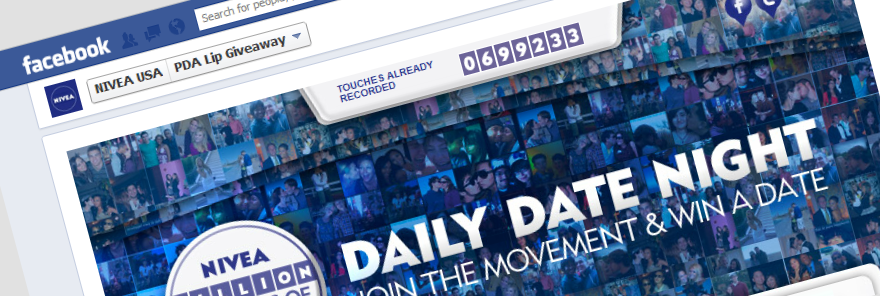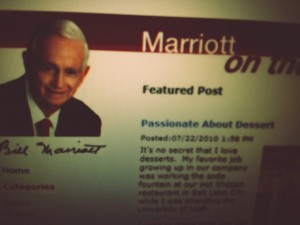April 29, 2013, 7 am. A uniquely shaped plane takes off in the Mojave Desert in California. Richard Branson, founder of Virgin Galactic, has been waiting for this morning for a long time. SpaceShipTwo, the spacecraft built by his company for the purpose of bringing tourists to space, is about to perform its first supersonic test flight.
The Virgin Galactic approach to space travel is an interesting one. A plane carries a spaceship smoothly up to 40,000 feet before it is released. Once released, rockets ignite, enabling the ship to finish the ascent into outer space on its own. A very clever way to provide humans present in the ship with a more seamless experience than the brutal take-offs of traditional rockets.
At 46,000 feet SpaceShipTwo is released. Its engine starts… 16 seconds, 56,000 feet up in the air. The test-flight was a success.
April 29, 2013 will be remembered as the day a new era began for the human race. It’s the day space tourism has become a certainty. Even if the program won’t open to the public until 2015, we know that it will now be possible to bring non-astronauts to space. Beyond the technological feat, Virgin Galactic has started a new movement that I believe will change humanity’s mindset. Here’s why.
The Overview Effect
The Overview Effect is the humility and perspective felt by astronauts when seeing our planet from space. “When a person gazes upon Earth from outer space,” explains Alex Maccaw, “they have a profound sense of perspective, a realization of fragility, that humanity and all life as we know it is completely dependent on a single planet and its thin atmosphere.” You don’t need to go really far to feel it: Felix Baumgartner, the man who brought sky-diving to another level by jumping from 127,000 feet, felt the Overview Effect when standing outside of the shuttle, ready to fall. Most astronauts who were lucky enough to travel to space came back with a new perspective of the world, a more humble and tolerant vision of their existence.

Going 100,000 feet high remained a challenge until now. But companies such as SpaceX and Virgin Galactic are on the edge of democratizing space travel. In a near future, gazing earth from 100,000 feet high or more will be something we could all do.
“Why is that important for the human race again?,” you might ask. Today only a handful of human-beings have experienced the Overview Effect, but imagine the consequences if thousands, or millions of humans went through the same experience. We would be all more peaceful, more tolerant and more focused on progress. Although I might sound a bit idealistic, I base my analysis on two things: human history and neurons.
History and Neurons
First, the historical explanation. You can observe an interesting correlation between tolerance and technology in our history: the more advanced technology becomes, the more open-minded humans get. Technological innovations increase our visible universe and the amount of information available to us. Logically, the more information we get, the more likely we’ll run into a piece of information in conflict with what we know and believe in. For example, if you were born in a small village and spent all your life there, the people and things surrounding you would probably remain perfectly in line with your beliefs and values. But if you took a plane and visited Rwanda or Mongolia, you would get to meet people who have completely different views of the world, things and landscapes that you never thought existed. Throughout history, technological innovations have made us more tolerant by exposing us to new worlds, values and beliefs.
Now comes the scientific explanation: Being exposed to values and beliefs that are not in line with our owns create cerebral conflicts. Cerebral conflicts are not nice to experience – nobody likes to be told they’re wrong – so our brain will choose between two behaviors to resolve the conflict: denial or acceptance. The easy way is usually denial, but denying the existence of an idea can be challenging when constantly reminded through multiple communication channels. Technological innovations make it harder and harder for us to ignore opposite values and beliefs, thereby forcing our brains to resolve cerebral conflicts by choosing acceptance. If the topic is of interest to you and if you have 20 minutes to spare, I highly recommend to watch God is in The Neurons. This video will tell you everything you need to know about cerebral conflicts, identity and tolerance.
The same way planes and boats have enabled us to travel the world and discover new cultures, the same way the internet has enabled us to be connected to anyone, anywhere, and challenge our beliefs and values, space travel will bring the human mindset to the next level, making us more humble, more tolerant and more focused on important things. April 29, 2013 was the day humanity made another step towards tolerance and peace.
Yet this is just the beginning. Soon we will be able to travel from London to Sydney in 4 hours or even go to Mars! It takes thousands of visionaries and entrepreneurs to build those technological innovations, and I’d like to thank all of them for their brilliant leadership and courage. Thank you for making us better humans.
Photo Credits EarthSky
Read More »


 Et voilà! So let’s wrap it up. In order to “refresh” your marketing strategy, try first to be more subtle; make sure to create unified campaigns offering a smooth user experience; don’t forget to make them as interactive as possible; and finally build mobile-ready versions for the main pages of your website. By doing that, you will join the early adopters that are surfing the waves of marketing innovation. When you get there, the next step will be to join the select companies, such as Nivea and Nike, that create the waves of marketing innovation. How so? Well, if you read me often you might already know the answer to this question: Just think out of the box.
Et voilà! So let’s wrap it up. In order to “refresh” your marketing strategy, try first to be more subtle; make sure to create unified campaigns offering a smooth user experience; don’t forget to make them as interactive as possible; and finally build mobile-ready versions for the main pages of your website. By doing that, you will join the early adopters that are surfing the waves of marketing innovation. When you get there, the next step will be to join the select companies, such as Nivea and Nike, that create the waves of marketing innovation. How so? Well, if you read me often you might already know the answer to this question: Just think out of the box. June 20, 2010, 9 pm. I’m on my way back to Paris after a long weekend in the south of France. My friend Charlotte and I have booked tickets for a night train that will bring us back at around 7 am. The train isn’t a standard train: it has a night club in it. One of the wagons has a bar and a dance floor where you can party until the early morning. We had never done this before and thought it could be an epic adventure!
June 20, 2010, 9 pm. I’m on my way back to Paris after a long weekend in the south of France. My friend Charlotte and I have booked tickets for a night train that will bring us back at around 7 am. The train isn’t a standard train: it has a night club in it. One of the wagons has a bar and a dance floor where you can party until the early morning. We had never done this before and thought it could be an epic adventure!











 Be Catchy.The current battle to win the SEO war sometimes makes companies forget the necessity of creating catchy titles in their blog. Yes, making sure your titles have all your keywords will definitely improve your SEO, but could also make all your potential readers dismiss your article because it didn’t catch their attention.
Be Catchy.The current battle to win the SEO war sometimes makes companies forget the necessity of creating catchy titles in their blog. Yes, making sure your titles have all your keywords will definitely improve your SEO, but could also make all your potential readers dismiss your article because it didn’t catch their attention. As
As  Not giving any voice to your brand doesn’t mean that you should replace it by your own voice. I see many entrepreneurs that tend to use their corporate blog as a personal blog or a journal. Yes, people want to read some behind-the-scene secrets about your company, but you shouldn’t push it too far. Being very private and personal will without any doubt attract more readers and onlookers in search of some spicy anecdotes. However, this could have a very negative impact on your brand image: not only would it make your personal image overtake your brand’s image in your readers mind, but it would also make them come back to your blog not to get information about a certain issue, or to take part to the community, but to get some more spicy stories. Thus, it would kill your
Not giving any voice to your brand doesn’t mean that you should replace it by your own voice. I see many entrepreneurs that tend to use their corporate blog as a personal blog or a journal. Yes, people want to read some behind-the-scene secrets about your company, but you shouldn’t push it too far. Being very private and personal will without any doubt attract more readers and onlookers in search of some spicy anecdotes. However, this could have a very negative impact on your brand image: not only would it make your personal image overtake your brand’s image in your readers mind, but it would also make them come back to your blog not to get information about a certain issue, or to take part to the community, but to get some more spicy stories. Thus, it would kill your  The best way to avoid the mistakes mentioned above is to hire a social media manager to write instead of you. The vast majority of small companies I know use their CEO or VP Marketing as the main writer for their blog. Having the CEO of your company writing punctual articles is really important to build a strong corporate image, and those posts should be focused on his professional experience as a founder, but the CEO shouldn’t be the person writing the day-to-day life of your company.
The best way to avoid the mistakes mentioned above is to hire a social media manager to write instead of you. The vast majority of small companies I know use their CEO or VP Marketing as the main writer for their blog. Having the CEO of your company writing punctual articles is really important to build a strong corporate image, and those posts should be focused on his professional experience as a founder, but the CEO shouldn’t be the person writing the day-to-day life of your company.




